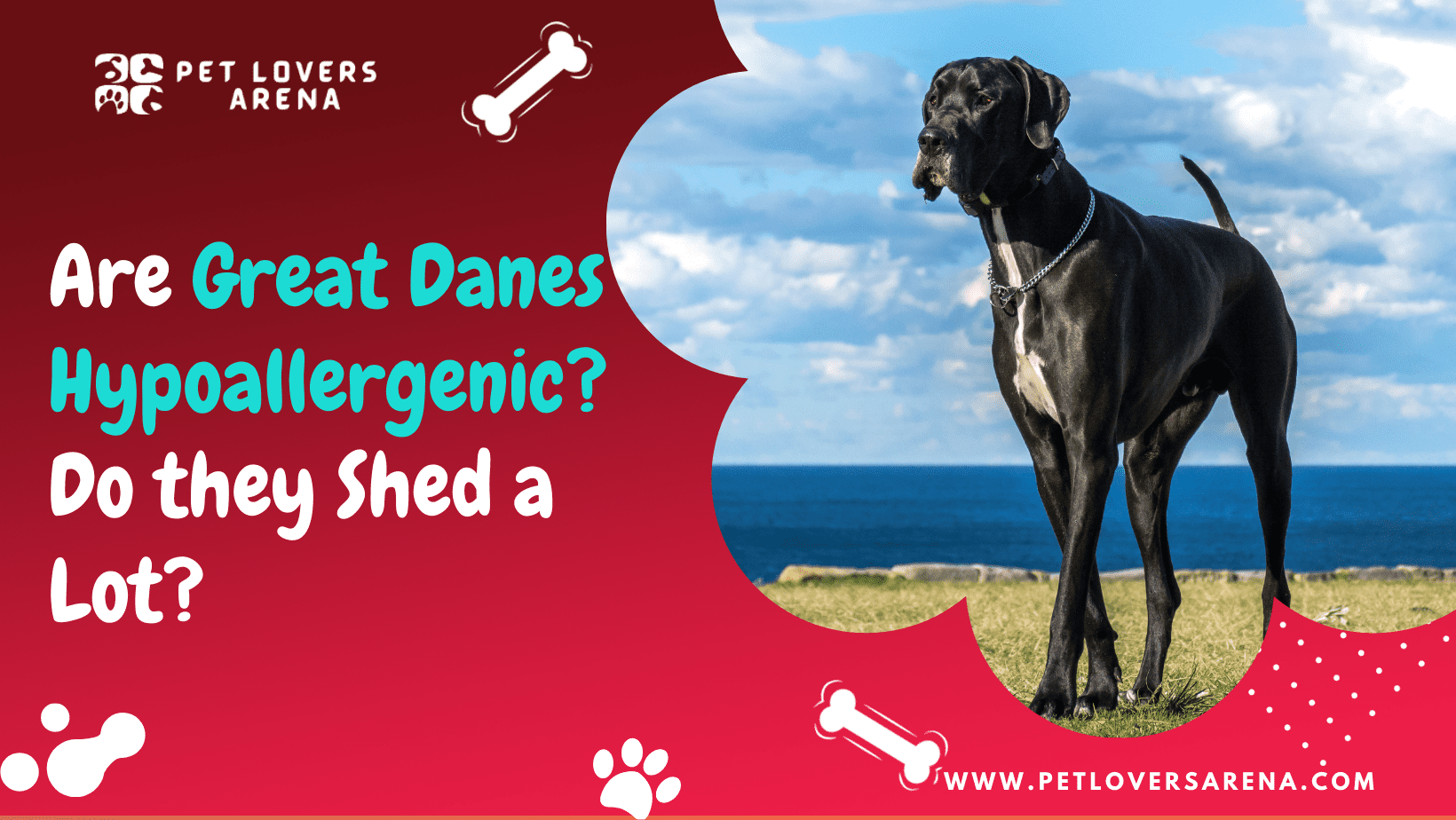Great Danes are nanny dogs, but unfortunately, if you are looking for a hypoallergenic dog, the Great Dane is not one such breed.
Hypoallergenic dogs are the ones that don’t shed much. Of course, you won’t find a dog who doesn’t shed at all, but those dogs who shed less and are less likely to cause allergies in people are considered hypoallergenic. Hypoallergenic dogs are good for pet lovers who want to own a dog despite being allergic to them. But if we consider the Great Dane, it is not a hypoallergenic dog. Great Danes shed a lot, and there are numerous reasons behind this.
This article will inform you about Great Danes’ being non-hypoallergenic and why they shed a lot. Besides this, the article will provide you with further important information you should know about the Great Danes.
Are Great Danes Hypoallergenic?
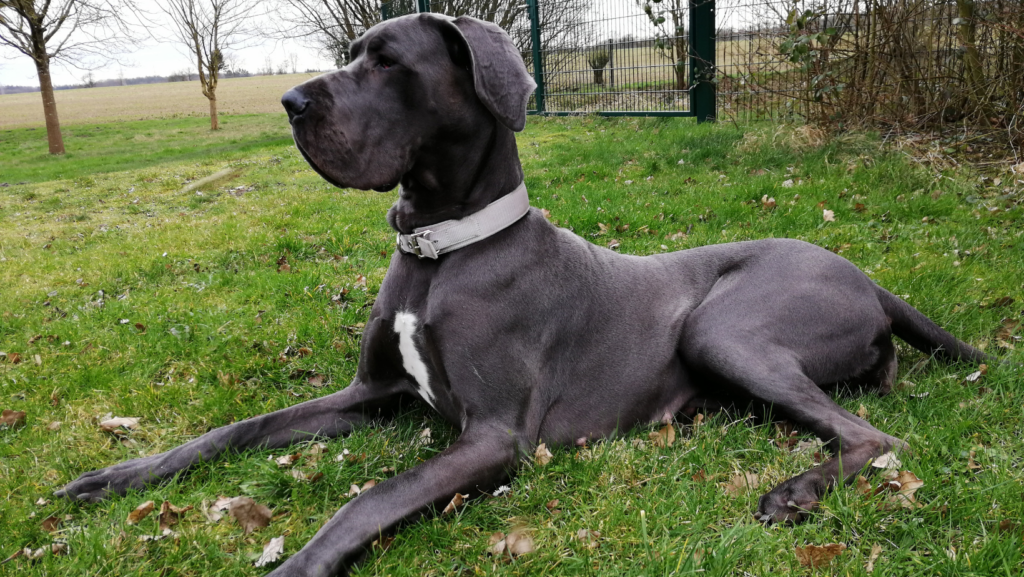
Owners who want to have a pet but are allergic to them. A Great Dane won’t be a good choice for such owners until they are extremely careful. A Great Dane sheds a lot of saliva and dander. If you have a Great Dane, you may notice his dander and hairs shed all around the house. Many people are allergic to the dangers of dogs like Great Danes.
Dogs like the Great Dane do not have long coats, so the hairs of your Great Danes don’t get shed all the time. But they have short coats that make them shed danger quite often throughout the whole year.
The Great Dane is most likely to cause allergic reactions in the spring and fall seasons. The allergic reaction in these seasons is because the Great Danes used to shed a lot of dander during these seasons.
When Great Danes shed a lot, vets and experts advise the owners to brush the coats of Great Danes more often, and for this, they can use a soft and firm brush that doesn’t harm their pet’s skin.
Shedding of Dander by Great Danes
Great Danes shed a lot in particular seasons, as talked about above. But what makes them more allergic than other dogs is their shedding of dander and hair. Small dogs such as Poodles also shed their hair, but they don’t shed dander. So not shedding danders makes them less allergic. But if we talk about Great Danes, the hair they lose includes danders.
No dog is completely hypoallergenic, but dogs such as poodles shed less than other dogs. Thus, many people often regard them as hypoallergenic, but they shed a lot for dogs like Great Danes, German Shepherds, and Great Pyrenees. Thus, many regard them as non-hypoallergenic dogs.
Drooling of the Great Dane
Great Danes not only shed a lot of hair, but they also drool a lot. The reason behind excessive drooling in Great Danes is the shape of their jaw. The jaw of the Great Dane is square. Consequently, the dog cannot keep the drool inside its mouth. Therefore, the shape of their jaw causes them to drool excessively. In addition, the folds of skin in the dog allow the saliva from the dog’s mouth to flow out easily. Thus, these reasons contribute to excessive drooling in Great Danes and make them not hypoallergenic dogs. Some owners are also allergic to dogs’ drool; thus, having a Great Dane is not a good option, or they need to be extra careful.
Do Great Danes Shed a lot?
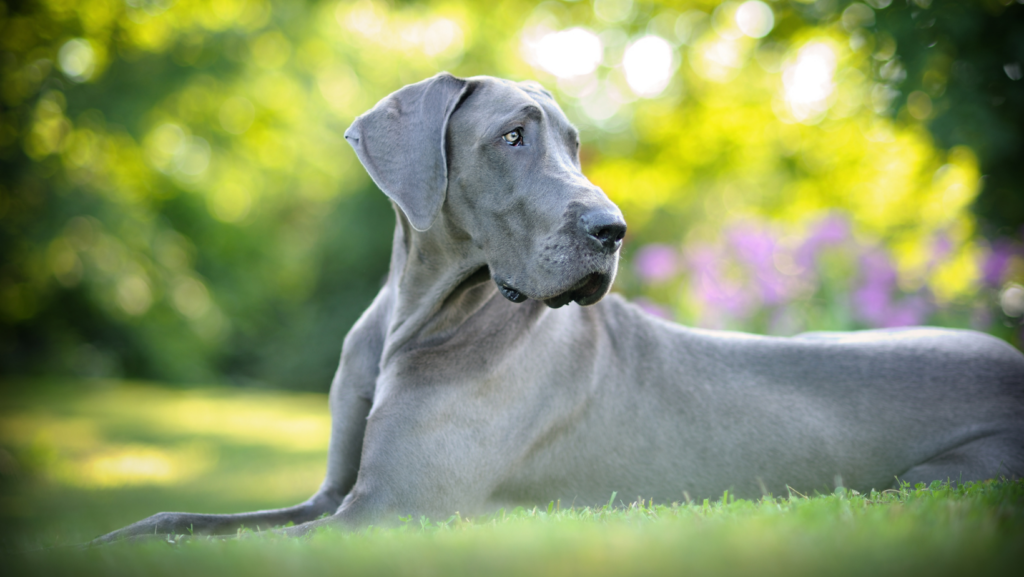
Great Danes surely shed a lot, but they don’t shed as much as other large breeds of dogs, such as Golden retrievers, German shepherds, Labradors, and others.
Great Danes do not have thick double coats, but they possess single coats with short hair. Because of their short hair, Great Danes shed a lot, and your house gets frequently filled with Great Dane hair. These hairs that they shed also possess danders of your dog.
Shedding hairs in your dog, including your Great Dane, is natural. The hair cycle follows that your dog’s hairs grow to a certain level, and then the growth stops. Once the growth stops, the hair will fall out shortly and make way for new hair follicles. The process keeps on repeating, so you should often brush your dog’s hair.
Younger dogs also shed a lot as they have a habit of scratching themselves with hard objects. In addition, dogs frequently shed their hair while licking, itching, or engaging in other activities.
Shedding of Coats by Great Danes
When we talk about dogs’ fur and shedding, it is common to raise the question: why do dogs have fur at first sight? The answer to this is very simple: dogs have fur to protect them from different weather changes or temperature changes.
Just like humans have hair growth, the hair stops growing at a certain time. In the same way, their hair stops growing at some point in dogs. Once the growth of hair stops, it ends with the falling off of the hair so that a new hair coat takes its place. The same goes with the shedding process of the Great Danes.
Great Danes shed a lot, and one reason can be their short hair coat, but their hair contains danders too, and you can find the hairs of Great Danes all around your home at some point, especially near winter or spring.
Great Dane hair follicles go through four basic cycles, further explained below.
- The growing phase: Growing phase of hair follicles is also referred to as the anagen phase of hair follicles. New hair grows in the anagen phase in Great Danes.
- Transition phase: In Great Danes, the transition phase is also called the Catagen phase. In the catagen phase, hair stops growing and detaches itself from the dermal papilla, and causes the shedding of hairs.
- Resting phase: The resting phase is also called the telogen phase. The hair follicles neither grow nor shed in the resting phase, but the new hair follicles start growing. That means a new hair starts its growing phase.
- Exogenous phase: In Great Danes, the new hair phase can be called or referred to as the exogenous phase. In the exogenous phase, old hair strands fall off, and new hair strands take their place.
The time of the shedding phase depends on the breed. Different dog breeds shed hair differently because one breed has a long duration of phases while others have a small one.
The shedding of hair also depends on the seasons as there is a coat change. Dogs have thinner hair coats when there is more daylight and a higher temperature near the summer season. As the temperature rises during the spring season, the hair coat of great Danes becomes thinner, causing them to shed more hair.
Shedding Amounts in Great Danes
Great Danes are great dogs in big size, so it is normal to shed more. Great Danes shed more hair than any other breed or any other dog. The reason for more shedding is their large size and short hair.
Great Danes have a large size, which means more surface area, and more surface area causes them to shed more hair from their coat whenever the season changes.
Before choosing a Great Dane as your pet, make sure you are not extremely allergic to dogs and hair. As Great Danes shed a lot and are non- hypoallergenic, there are great chances they may cause trouble for you.
Factors that Contribute to the Great Danes’ Shedding of Hair
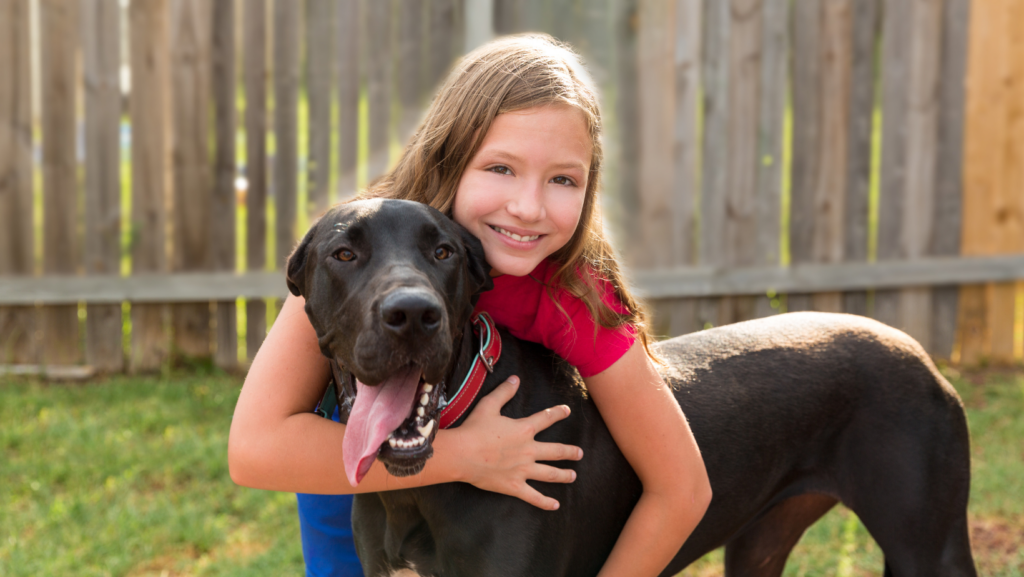
If your Great Dane is shedding hair more than normal, there can be certain reasons that you should look for in your dog.
- Different seasons: Dogs, such as Great Danes, frequently shed their winter or spring coats and grow new ones. Thus, your dog will shed more hair during winter or at year’s end.
- Health problems: If your Great Dane is shedding more, there can be any number of health problems that your dog may be facing. Hypothyroidism and cushioning are two diseases that cause Great Danes to shed more.
- Parasites: If Great Dane is affected by ticks or other parasites, your dog will shed a lot. Parasites and ticks cause the dogs to itch more, and thus they shed more hair.
- Diet: It is important to maintain your dog’s health by giving them a proper diet. When your dog is no longer a puppy, you should stop giving the dog puppy food and move toward giving the dog adult food. Adult food for the Great Dane is different from all the other dogs. Also, a poor diet often leads to the shedding of more hairs on your dog from the skin, irrespective of the season.
- Stress: Dogs have anxiety disorders, and it is common in Great Danes to have anxiety disorders. Stress often leads to more hair shedding in your dog, especially in Great Danes. So, if you notice your dog acting strangely or eating irregularly, take him to the vet right away to avoid any problems.
- Allergies: Allergies in your dog make your dog shed more hair than usual. Allergies in Great Danes are very normal, and they can have allergies due to long exposure to sunlight. Take your dog to the veterinarian. He can analyze your dog and give some precautions and treatment for your dog.
Great Danes Blowing Out
Great Danes belong to the large dog breeds. Blowing out refers to when dogs start losing their winter coat, which gets soon replaced by a summer coat. Winter coats get removed during spring as the day starts getting longer, increasing the daylight exposure to dogs, and the temperature also increases. The change in temperature and daylight timing causes dogs to shed their coats.
Similarly, the dogs start losing their summer coats to prepare for a thicker winter coat in the fall season. This phenomenon or cycle can also get termed the “cycle of a dog’s coat.”
Blowing out is common in dogs that have a double coat. Since the Great Danes have single coats, they don’t suffer from the typical blowout. But at the same time, Great Danes belong to breeds of large dogs, and thus they have more surface area and more hair loss.
However, if you want to keep a Great Dane as a pet, there are ways to manage the shedding of coats in Great Danes.
How to Deal with Hair Shedding in Great Danes?
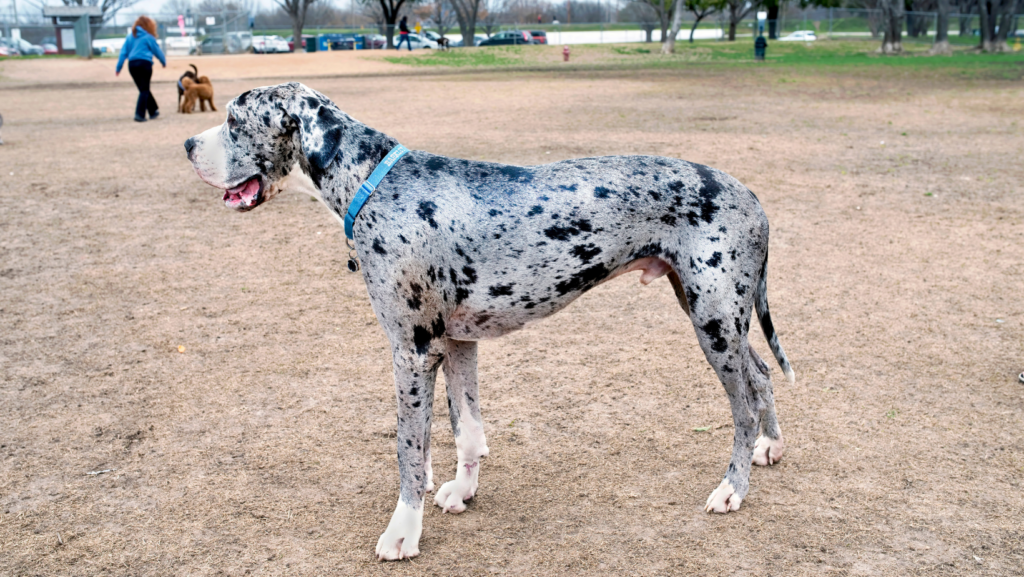
You’re probably aware that the shedding of a dog’s coat is hereditary in breeds like Great Danes. So the question now is, how do you deal with the loss of the Great Danes?
Here are some steps that you can follow to manage shedding in Great Danes that make this shedding of hair in Great Danes look like it is not a big problem.
1. Prepare your Great Dane for grooming
Grooming is a way to greatly minimize the shedding of your Great Dane’s hairs. Grooming your Great Dane regularly is what you get suggested by the dog’s veterinarian often. However, if you are not a fan of grooming dogs, Great Danes are not the dogs for you.
Regular grooming includes fur brushing, and for fur brushing, you don’t have to use a brush with tough bristles. Instead, a soft brush that suits your Great Dane’s body and doesn’t cause much harm to his skin is preferable. Regular brushing of your Dane not only increases the blood flow in your dog but also helps to minimize the hair spread of the dog in your house, as when you groom or brush your Great Dane, the loose fur will get attached to the brush and, rather than falling on the ground in your home, the fur will get stuck on the brush.
Brushing and grooming your Great Dane should be part of your routine. Clean your friends’ teeth regularly and also trim their nails often. The grooming task may be time-consuming, but it will keep your dog healthy, and you can prevent your Great Dane from acquiring many diseases.
When it comes to brushing and grooming a Great Dane, the perfect type of brush and soft bristles are essential. You cannot use a brush designed for a small dog on your Great Dane. Different kinds of brushes are available in the market for your Great Dane’s grooming. Make sure to use the good one for your dog, and never forget to check for reviews and what the vet suggests.
2. Good brushing techniques that help your dog
For grooming your Great Danes, you can opt to use a furminator as it is a hair-removing tool that will make your work much easier. But if you are not choosing a furminator, go for a soft-bristled brush.
For grooming your Great Dane, use a bristle brush that is quite firm, and that doesn’t cause harm to your dog’s skin. Go for brushing your dog once or twice a week or more frequently as per the vet’s suggestion. When the shedding seasons arrive, you should regularly brush your dog’s hair. Regular brushing will help you stop the excessive shedding of dog hair in the house. But if you use a furminator for your dog, make sure you don’t cut your dog’s skin and be careful.
A good brushing session for your Great Dane will be 5 to 15 minutes. If you want to protect your home from your dog’s hair, first brush it in the backyard or away from your house, or you may need a heavy-duty vacuum.
3. Better Nutrition Minimizes Shedding
Feeding your Great Dane a good and balanced diet is more important than you think. A good diet will help you minimize hair loss in the right way, thus keeping it healthy. In addition, a balanced, healthy diet rich in nutrition helps your dog’s hair be shiny and less prone to shedding at the same time.
Go, Great Danes! The easiest thing that they can digest is proteins, so the diet of a Great Dane should contain proteins in it. If you are going with a protein diet, don’t increase it regularly unless your dog’s vet advises you. A dog food diet is good, but a protein diet is often considered healthy for dogs.
Give plenty of water to your dog. Giving plenty of water to your dog will help the Great Dane keep bacteria and toxins away from their bodies. In addition, you can make changes to your dog’s diet by adding omega-3 supplements to the diet. Omega 3 is good for your dog’s skin and hair, and it will help the dog’s hair to get strong and prevent shedding to a great extent.
4. Bath Time for Your Great Dane
Great Danes are prone to getting dry skin, so giving your dog frequent or regular baths is advisable. However, bathing your Great Dane regularly or frequently will deplete the essential oils from your dog’s skin, causing it to become dry and prone to problems. Regular bathing can also make your dog’s skin itchy or extremely dry and rough.
Every few weeks, you can bathe them to remove dirt and dead cells from your Great Dane’s body. However, regular bathing is not recommendable. Also, if you brush your dog’s hair regularly, there are high chances that some hair gets stuck in your dog’s coat after brushing also. However, bathing after a few weeks of your Great Dane is preferable.
Don’t use your soap for bathing your Great Dane. Special soaps are available in the market that keeps their skin and skin coat healthy for dogs. When choosing a good soap for your dog, make sure the pH level is neutral, not as with other human soaps with pH levels that are rarely neutral.
If you look for specific ingredients in your dog’s soap, keep in mind to choose a soap that contains oats or oatmeal, as both are healthy for your dog and will keep your Great Dane’s hair shiny and prevent hair loss to a great extent. Also, remember to choose a dog soap that is less toxic, detergent-free, and alcohol-free.
Great Danes are massive dogs, and sometimes, bathing them is a difficult task. If you think you lack the ability or don’t have much time for grooming, you can take your dog to a professional dog groomer. But it is always preferable to groom your dog by yourself as it is a great bonding experience for both the dog and the owner.
5. Keep your Great Dane Hydrated
As much as nutrition is important to keep your dog’s hair and skin healthy, so is water. If your dog remains hydrated, the skin and hairs on your dog will be healthy too.
Studies have proved that dehydrated dogs shed more as compared to hydrated dogs. Thus, when you take your dog to the vet, the first question that the vet asks is whether the dog drinks enough water or not. Keeping your Great Dane hydrated is as important as giving them a healthy, balanced diet. Keep the water bowl near your Great Dane full and clean so that the dog can fill itself with water whenever he feels thirsty. Giving water alone is not enough. Ensure the water you give your dog is also clean and free of bacteria and other microorganisms. Keep the water bowl where you give your dog water clean to keep your dog healthy.
6. Minimize The Great Dane’s Shedding all Over the House
It becomes annoying when you often notice hairs from your Great Dane on the floor or clothing. If the person or dog’s owner is allergic, the condition will worsen. You can do some changes or things to reduce the amount of shedding in your Great Dane around the house. Grooming is one we have discussed earlier, but you still need to make some changes in your home.
You should invest in a vacuum cleaner that is good at picking up your dog’s hair and keeping your house clean. Remember to vacuum clean your house often to prevent any problems from the hair shedding of your dog.
Regularly wash the furniture that has a removable cover. Often, you can wash these covers once a week. For flooring, you can go for hardwood or tiles. If you have a carpeted floor or prefer one, choose a color of carpet that hides the dog’s hair.
Final Words
The Great Dane belongs to a giant dog breed and is not hypoallergenic. Great Danes shed a lot, and the dogs have dander in their hairs that get shed from their body. Along with this, Great Danes excessively drool, which causes trouble for your dog. However, many owners are allergic to hairs and drool from dogs, so they are considered hypoallergenic.
Many factors contribute to the shedding of a dog’s hair, and variation in seasons is one. However, you can take certain measures to protect your home and prevent your Great Dane from excessive shedding. Taking your dog to the veterinarian in an emergency or abnormal condition is highly recommended.
Meet John Patterson, an accomplished Dog Trainer and a dedicated advocate for building strong human-canine relationships.With years of experience as a Professional Dog Trainer, John firmly believes that well-trained dogs are a reflection of patient guidance and unwavering care. Beyond his training skills, he finds solace in grooming and playing with dogs, nurturing their physical and emotional well-being.

